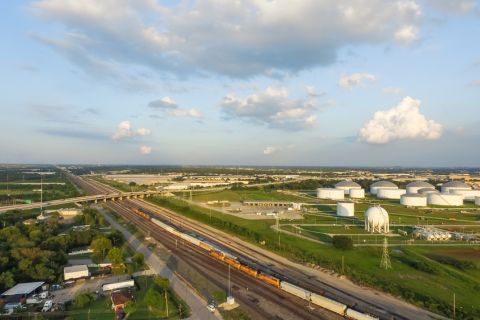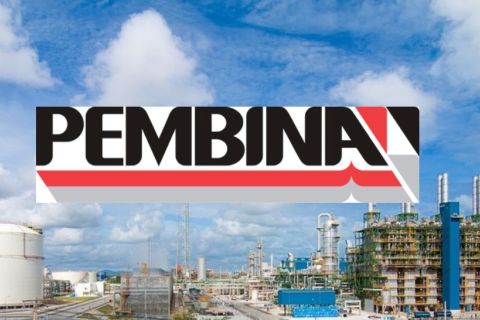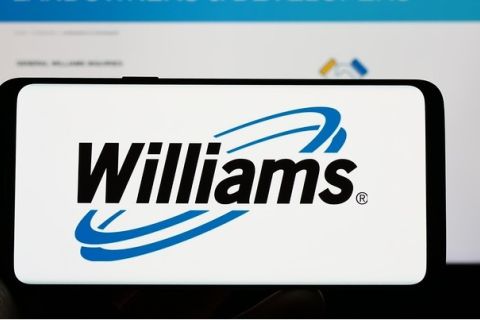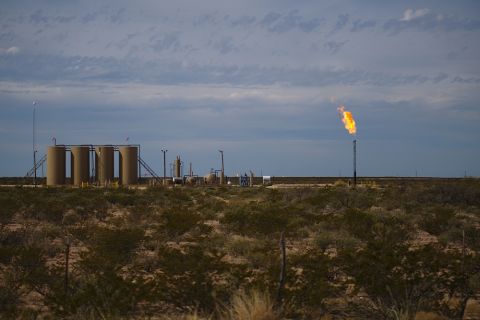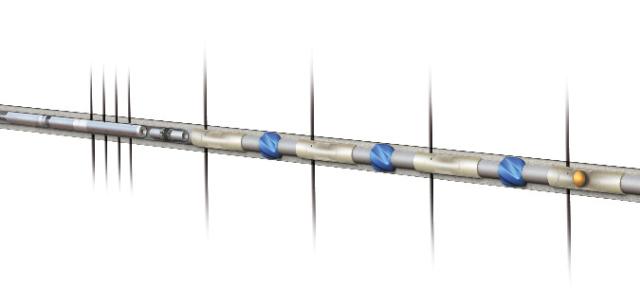
Ball-activated limited entry QuickPORT IV sleeves at the toe are combined with PNP as part of a hybrid completion. (Source: Packers Plus)
Sliding sleeve completion technologies emerged as multistage completions and horizontal drilling were being combined to unlock millions of barrels of oil and gas in unconventional resources around North America.
During the past two decades, as operators continue to maximize recovery and increase stage counts and treatment sizes, sliding sleeve technology has continuously evolved to meet the needs of operators. From the early days of single-digit stage counts for ball-activated completions to systems with more than 100 stages, capabilities and applications for the technology have advanced to include ball-activated cemented sleeves, hydraulically activated sleeves, coiled tubing (CT)-activated sleeves and sleeves activated using other methods.
The latest round in sliding sleeve innovation could be the most promising, providing operators with increased stimulation efficiency, less intervention and risk during stimulation and reduced operating time and costs.
Ball-activated sleeve systems
Ball-activated sleeves revolutionized well completions by significantly reducing the time and costs through continuous pumping operations. Using incrementally larger balls pumped from the surface, operators isolate and stimulate each stage without significant downtime spent between stages. This is achieved with the ball for the subsequent stage pumped in the flush of the previous stage.
The most commonly used size increments in ballactivated systems are 1/8 in. and 1/16 in. To further increase stage count, ball and seat size increments smaller than 1/16 in. were developed. An extensive quality assurance/quality control program is a key component in ensuring each sleeve functions as planned.
Using these smaller ball and seat increments, a 65-stage well using the Packers Plus StackFRAC HD-X system was successfully run in the Bakken in North Dakota using an average of 70,000 lb of proppant per stage at pump rates between 19 bbl/min and 30 bbl/ min. All stages were stimulated in 2.5 days, with less than 55 hours of total pump time.
Limited entry sleeves
The benefits of reduced time and costs associated with continuous pumping operations in ball-activated sliding sleeves were soon adapted for cemented liner completions.
In conjunction with developing a sliding sleeve for cemented liner completions, the industry focused on technology that allowed one ball to open multiple sleeves at a time—mimicking the limited entry treatment of plug and perf (PNP). Packers Plus’ TREX QuickPORT IV sleeve represents an evolution of this sliding sleeve technology. The sleeve is simpler with fewer parts compared to previous limited entry sleeve designs and contains erosion- resistant nozzles to facilitate an even distribution of stimulation fluid into the entry points.
Recently, 80 Packers Plus limited entry QuickPORT IV sleeves were run in a single well by an operator in the Permian Basin. In this well, four-sleeve clusters were installed for each stage with 20 stages for the deepest 1,189 m (3,900 ft) of a 3,719-m (12,200-ft) lateral in a hybrid completion, with the remaining stages completed using PNP. The QuickPORT IV limited entry stages were stimulated in less than 70 hours of pump time, saving the costs associated with downtime as well as mitigating the operational risk of intervention in the toe stages.
Hydraulically activated sleeves
Hydraulically activated sleeves, or toe sleeves, are integral to sliding sleeve systems for the first stage of a completion. Without the first stage opening to provide access to the reservoir, balls or other tools cannot be pumped down for subsequent stimulation operations. Toe sleeves can be combined with other completion methods, including PNP, to eliminate a CT run to perforate the toe.
Toe sleeves also have been designed for pressure testing. Some areas in North America require the casing to be pressure tested, typically to the maximum anticipated operating pressure. Pressure testable toe sleeves in the industry provide both single and multiple pressure test options. The Packers Plus Toe-XT Hydraulic Sleeve uses a dual pressure cycle to enable a single pressure test to maximum casing pressure or tool capabilities, followed by a lower pressure operation to shift open the sleeve, independently of stimulation operations without time constraints.
An operator working in East Texas used the Toe-XT Hydraulic Sleeve to successfully pressure test the casing at 11,450 psi, several weeks after the system was installed and cemented in place. After bleeding the pressure back down to 0 psi, the sleeve was opened on the next cycle for stimulation at a lower pressure of 4,850 psi, with 19 bbl of fluid injected into the formation
CT-activated sleeves
Sliding sleeve completion systems activated with a shifting tool run on CT are another variation in sliding sleeve technology. These systems enable high stage counts, limited only by the reach of the CT.
There are several service companies providing CT-activated sleeve technologies, typically using packers on the shifting tool to activate a sleeve and then providing isolation for each stage during stimulation. The Packers Plus Quadrant system was recently reengineered without packer elements on the shifting tool to simplify operations and minimize risk of the tool getting stuck. This shifting tool utilizes retractable keys that engage with a profile to open and close the sliding sleeve. The closeable functionality of the Quadrant sleeves reduces operational risk by enabling the subsequent stage to be opened after the previously stimulated stage has been closed. This functionality also serves as the mechanism for fluid diversion and stimulation.
Other sleeve activation methods
A new sleeve activation method that uses a latch-based tool pumped from surface is starting to gain traction. This method incorporates a full inside diameter (ID) wellbore for no restrictions during stimulation to maximize treatment rates, while retaining the continuous pumping efficiencies of ball-activated systems and also providing the ability for high stage counts.
The Packers Plus Ultra-High Stage Count (UHSC) system began field trials earlier this year and uses a sleeve activation tool pumped from surface to latch into and shift a specific sliding sleeve in the wellbore for single-point entry stimulation in either openhole or cemented liner completions. A ball run in place with the sleeve activation tool provides isolation for fluid diversion and stimulation. The balls and seats on the sleeve activation tool are degradable, eliminating the need for millout.
A 60-stage Packers Plus completion system was stimulated earlier this year in an extended-reach lateral, using 50 UHSC stages along with nine ball-activated FracPORT sleeves and one Hydraulic FracPORT sleeve. All UHSC stages were successfully stimulated with a maximum treatment rate of 91 bbl/min and an average 80 bbl/min. The well was stimulated with approximately 551,840 bbl of fluid and 13.1 MMlb of proppant. Completion of all 60 stages took approximately 10 days versus 35 for a prior PNP completion with similar well parameters, saving expensive pumping fees and bringing the well on production more than 20 days faster.
Conclusion
While a future with autonomous completion technology of downhole tools that can be operated from surface and require no downhole intervention might not be that far off, in the meantime the latest sliding sleeve innovation using latch-based tools pumped from surface enables several stages to be stimulated using a full ID and minimizing intervention. The technology also facilitates continuous pumping operations, which offer time and cost efficiencies that are essential in today’s operating environment.
Recommended Reading
Midstream Operators See Strong NGL Performance in Q4
2024-02-20 - Export demand drives a record fourth quarter as companies including Enterprise Products Partners, MPLX and Williams look to expand in the NGL market.
Post $7.1B Crestwood Deal, Energy Transfer ‘Ready to Roll’ on M&A—CEO
2024-02-15 - Energy Transfer co-CEO Tom Long said the company is continuing to evaluate deal opportunities following the acquisitions of Lotus and Crestwood Equity Partners in 2023.
Pembina Pipeline Enters Ethane-Supply Agreement, Slow Walks LNG Project
2024-02-26 - Canadian midstream company Pembina Pipeline also said it would hold off on new LNG terminal decision in a fourth quarter earnings call.
Williams Beats 2023 Expectations, Touts Natgas Infrastructure Additions
2024-02-14 - Williams to continue developing natural gas infrastructure in 2024 with growth capex expected to top $1.45 billion.
Waha NatGas Prices Go Negative
2024-03-14 - An Enterprise Partners executive said conditions make for a strong LNG export market at an industry lunch on March 14.

